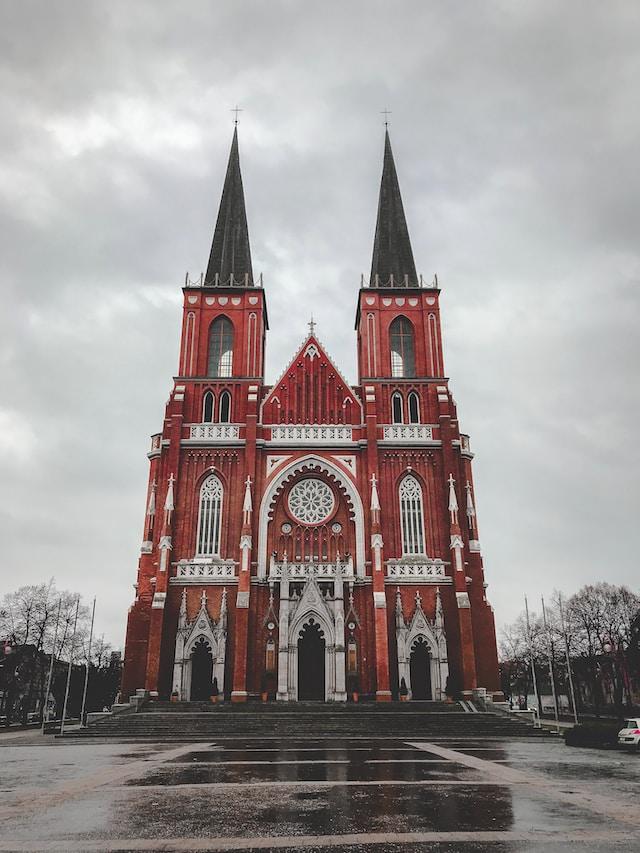
In their distress and with no hope of assistance from other Western countries, thousands of Poles converged upon Częstochowa, seeking refuge in the only entity that could offer aid in their moment of need.
Newsroom (Gaudiumpress)T he medieval city of Częstochowa, particularly the revered monastery of Jasna Gora, known as the Mount of Light, holds a profound significance in Polish spirituality. This hallowed site houses an invaluable relic: the miraculous image of Our Lady, also revered as the Black Madonna.
According to a deeply rooted tradition, this image was crafted by St. Luke on a table personally constructed by Our Lord Jesus Christ, all the while engaged in a conversation with the Blessed Virgin Mary. The icon’s journey spans centuries, as it was first discovered by St. Helena in Jerusalem and subsequently transported to Constantinople, where it resided for approximately five centuries. Eventually, in the 14th century, it found its way into the possession of the Polish prince, Ladislaus Opolszyk.
During a tumultuous period marked by Poland’s conflict with the Tatars, an enemy arrow pierced the window of Ladislaus’ castle in Belsz and became lodged in the sacred icon’s throat. To safeguard the cherished relic, the prince resolved to transport it to his hometown of Opal. However, upon making an overnight stop in Częstochowa, he temporarily left the image in a small wooden chapel. To his astonishment, the following day, when he sought to resume his journey, his horses adamantly refused to budge, despite the best efforts of the coachmen to persuade them.
Recognizing Our Lady’s divine will, Ladislaus made the heartfelt decision to leave her within the chapel. Subsequently, the sacred image became known as Our Lady of Częstochowa. A magnificent monastery and church, Jasna Gora, were constructed around her, heralding the rapid spread of Marian devotion throughout the region. Countless pilgrims journeyed to beseech the Black Madonna with their prayers.
It didn’t take long for miraculous events to be attributed to her intercession. In the year 1655, the monastery faced a dire siege by the Swedes, who had already conquered major Polish cities such as Warsaw, Krakow, and Poznan. For an astonishing forty days, a steadfast group comprising two hundred soldiers, nobles, and seventy monks courageously withstood the onslaught of more than three thousand enemy troops. The Poles emerged victorious, attributing their triumph to the intercession of Our Lady. In a solemn gesture, King John II Casimir consecrated Poland to the Virgin Mary, declaring her the nation’s Queen and Patroness.
In the year 1920, during the tumultuous communist invasion, it was once again to her that the people turned…
The Battle of the Vistula Amidst Russia’s claim to universal dominance, the Polish-Soviet War ignited. Polish general Josef Pilsudski, in collaboration with the Ukrainian nationalist leader Simion Petlura, launched an incursion into Soviet Ukraine, advancing towards Kiev.
Although their initial assault was repelled, and the Polish-Ukrainian forces were compelled to retreat, Lenin exploited the situation as a pretext to deploy the Red Army, with the aim of sovietizing Poland.
The Poles found themselves retreating approximately fifteen kilometers each day. Despite a series of prior victories, the Bolshevik forces, commanded by the youthful “Soviet Napoleon” Tukhatchevsky, advanced relentlessly towards Warsaw, seemingly destined for victory.
In their despair, devoid of any hope of aid from Western nations, thousands of Poles converged in Częstochowa, seeking solace and turning to the sole source of hope available to them. She had saved them in the past; why wouldn’t she do so again?
The climactic showdown unfolded on August 15, 1920, coinciding with the feast of the Assumption of the Blessed Virgin Mary, along the banks of the Vistula River.
In a sudden turn of events, the Russian forces initiated a retreat. The Poles swiftly launched a counter-offensive, driving the enemy all the way to East Prussia. Nearly one hundred thousand Russian soldiers surrendered to the Polish army. Some historians argue that, even to this day, they struggle to ascertain the cause of the “decisive defeat endured by the Red Army.”
However, we maintain a different perspective. The search for the cause remains elusive because it is directed towards earthly explanations when the answer lies in the heavens. On that fateful day, Our Lady manifested herself in the skies above Warsaw, dispelling the communist forces. The victory was promptly attributed to the intercession of the Black Madonna, forever etching the event into history as the miracle of the Vistula.
In the depths of anguish and with no prospect of assistance from other Western nations, One might almost consider it a universal principle of Marian intervention: it often reveals itself when individuals find themselves at the brink of their own efforts, enveloped by the bitter scent of impending defeat. It serves as a poignant reminder that victory can be solely attributed to the intervention of the Virgin.
Hence, even in moments when all appears lost, we can rest assured that our Queen and Protectress continues to hold the reins of history within her grasp.
The commemoration of Our Lady of Częstochowa falls on August 26.
By Miguel de Souza Ferrari
Compiled by Kate Iwuc